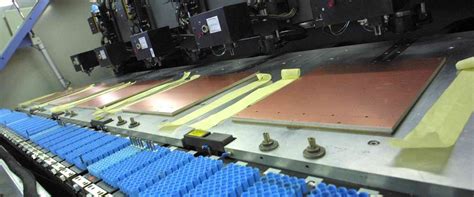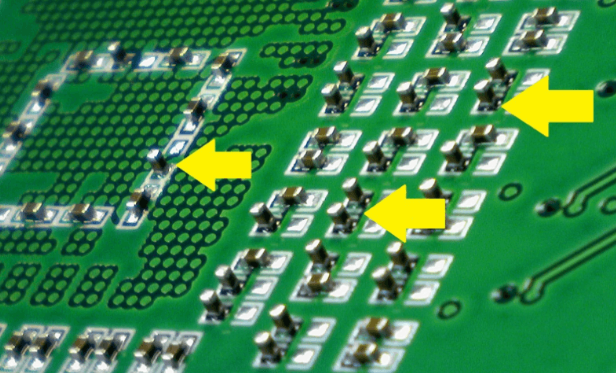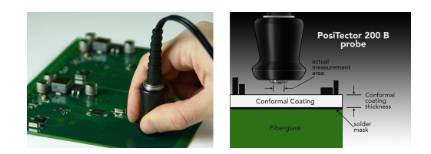Global PCB Manufacturing Giants: Leaders Shaping Electronics Innovation
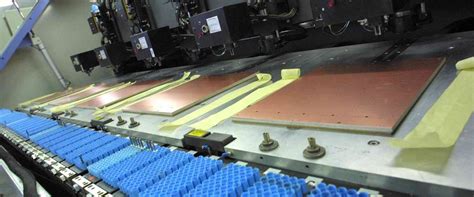
Key Takeaways
When exploring the PCB manufacturing landscape, you’ll find that a handful of global giants dominate the industry, driving innovation through cutting-edge technologies like high-density interconnect (HDI) and rigid-flex solutions. These PCB manufacturing companies prioritize scalability and precision to meet the demands of sectors such as consumer electronics, automotive, and telecommunications. A critical factor shaping their strategies is PCB manufacturing cost, which influences decisions around automation, material sourcing, and regional production hubs.
Asia-Pacific remains the epicenter of PCB manufacturing business activity, accounting for over 80% of global output, with China, Japan, and South Korea leading in both volume and advanced R&D. Meanwhile, North America focuses on high-margin, specialized applications like aerospace and defense, leveraging partnerships to streamline supply chains. Below is a comparison of key regional dynamics:
| Region | Production Focus | Cost Drivers | Technological Edge |
|---|---|---|---|
| Asia-Pacific | High-volume, consumer-grade | Labor efficiency, material access | HDI, flexible PCBs |
| North America | Low-volume, specialized | Automation, R&D investment | Aerospace-grade, rigid-flex |
Challenges like material shortages and environmental regulations push manufacturers to adopt sustainable practices, such as lead-free processes and recycling initiatives. As 5G networks and IoT devices proliferate, PCB manufacturing must evolve to support faster signal transmission and miniaturization—trends that redefine PCB manufacturing cost structures and demand agile business models. By balancing innovation with operational efficiency, industry leaders continue to shape the future of electronics.
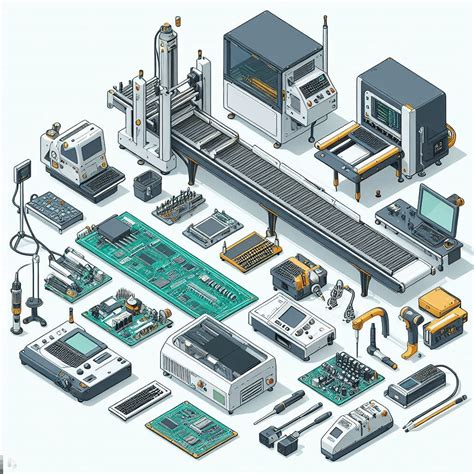
Introduction to Global PCB Manufacturing Leaders
When you think about the backbone of modern electronics, PCB manufacturing sits at the core. The world’s largest PCB manufacturing companies are not just production powerhouses—they’re innovation engines, enabling everything from smartphones to aerospace systems. These industry leaders dominate the market by combining cutting-edge technology with strategic scalability, ensuring they meet the rising demand for high-performance circuit boards.
The PCB manufacturing business thrives on precision and adaptability. Companies invest heavily in advanced processes like high-density interconnect (HDI) and rigid-flex solutions to cater to industries requiring miniaturization and durability, such as medical devices and automotive electronics. For instance, reducing PCB manufacturing cost while maintaining quality remains a critical focus, achieved through automation, optimized material usage, and regional supply chain efficiencies.
Tip: When evaluating a PCB partner, consider their expertise in balancing cost-efficiency with technological capabilities—this ensures long-term reliability for your projects.
Asia-Pacific continues to lead in PCB manufacturing, housing over 80% of global production capacity. Countries like China, Japan, and South Korea leverage established ecosystems for raw materials and skilled labor. Meanwhile, North American manufacturers emphasize specialized, low-volume/high-mix production, catering to defense and aerospace sectors where compliance and traceability are non-negotiable.
Whether you’re sourcing prototypes or mass-produced boards, understanding regional strengths helps align your needs with the right PCB manufacturing companies. As the industry evolves, partnerships between tech giants and PCB producers are accelerating advancements in 5G infrastructure and IoT devices—proof that collaboration drives the next wave of electronics innovation.

Market Dominance: Top Companies Driving Electronics Innovation
When you look at the global PCB manufacturing landscape, a handful of industry giants stand out for their ability to shape trends and push technological boundaries. These leading PCB manufacturing companies leverage economies of scale, cutting-edge R&D, and strategic partnerships to maintain their dominance. By focusing on high-volume production and precision engineering, they drive down PCB manufacturing cost while delivering advanced solutions like high-density interconnect (HDI) and rigid-flex PCBs—critical for modern electronics such as smartphones, automotive systems, and medical devices.
Asia-Pacific remains the epicenter of PCB manufacturing business activity, with firms in China, Taiwan, and South Korea accounting for over 70% of global output. Their dominance stems from integrated supply chains, government support, and investments in automation. However, North American manufacturers are carving niches in high-reliability sectors like aerospace and defense, emphasizing quality and compliance over pure cost efficiency. This regional specialization ensures that innovation thrives across diverse applications.
What sets these market leaders apart is their ability to balance scalability with agility. For instance, companies adopting AI-driven process optimization or additive manufacturing techniques can reduce waste and accelerate prototyping—key factors in staying competitive. Collaboration with tech giants and startups alike also fuels advancements, enabling faster adoption of emerging standards like 5G infrastructure and IoT-enabled devices.
Yet, the PCB manufacturing sector isn’t without challenges. Rising material costs and environmental regulations pressure margins, pushing firms to adopt sustainable practices such as lead-free finishes and recycling initiatives. By addressing these hurdles head-on, top players not only secure their market positions but also set benchmarks for the industry’s future.
In essence, the dominance of these PCB manufacturing companies isn’t just about scale—it’s about their relentless pursuit of innovation, efficiency, and adaptability in a rapidly evolving electronics ecosystem.
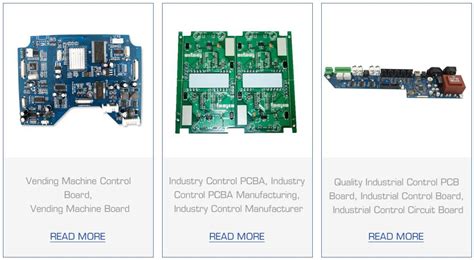
Technological Advancements in High-Density and Rigid-Flex PCB Solutions
When you look at the evolution of PCB manufacturing, few areas are as transformative as the development of high-density interconnect (HDI) and rigid-flex PCB solutions. These innovations are redefining how PCB manufacturing companies address the growing demand for compact, high-performance electronics. HDI technology, for instance, enables the placement of more components in smaller spaces, critical for devices like smartphones, wearables, and IoT sensors. By leveraging microvias, stacked vias, and finer traces, manufacturers achieve higher signal integrity while reducing PCB manufacturing cost through optimized material usage.
Rigid-flex PCBs, which combine rigid and flexible substrates, are another breakthrough. They eliminate the need for connectors and cables, enhancing reliability in applications like aerospace, medical devices, and automotive systems. For PCB manufacturing businesses, this translates to opportunities in markets prioritizing durability and space efficiency. Advanced lamination techniques and precision etching ensure these boards withstand extreme conditions, making them indispensable for next-gen electronics.
Automation and AI-driven design tools are further streamlining production. By minimizing human error and accelerating prototyping, companies reduce turnaround times and costs—a key advantage in competitive sectors. However, balancing PCB manufacturing cost with quality remains a challenge. Innovations like additive manufacturing and embedded components help address this, allowing for thinner, lighter boards without compromising performance.
Regional hubs like the Asia-Pacific dominate PCB manufacturing due to economies of scale and established supply chains, while North America focuses on specialized, high-mix-low-volume production. Partnerships between tech firms and manufacturers, such as Andwin PCBA, are critical in scaling these technologies globally. Their expertise in both HDI and rigid-flex solutions exemplifies how collaboration drives industry progress.
Sustainability is also shaping advancements. Eco-friendly materials, lead-free finishes, and waste-reduction practices are becoming standard, aligning PCB manufacturing companies with global environmental goals. As 5G and IoT expand, the push for smarter, greener PCBs will only intensify—ensuring the industry remains at the forefront of electronics innovation.
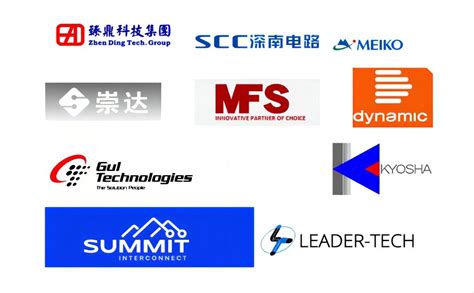
Growth Strategies and Industry Partnerships Among Leading Manufacturers
To maintain dominance in the competitive PCB manufacturing landscape, top PCB manufacturing companies rely on a blend of innovation, strategic alliances, and cost optimization. You’ll find that industry leaders prioritize vertical integration to control supply chains, reducing PCB manufacturing cost while scaling production. For instance, partnerships with material suppliers and semiconductor firms enable manufacturers to secure raw materials at competitive rates, ensuring stability amid market fluctuations. Collaborations with automotive, aerospace, and consumer electronics giants also drive demand for specialized boards, from high-density interconnect (HDI) designs to rigid-flex solutions.
Expanding into emerging markets is another cornerstone of growth. By establishing production hubs in regions like Southeast Asia or Eastern Europe, PCB manufacturing businesses leverage lower labor costs and proximity to growing consumer bases. Simultaneously, investments in automation—such as AI-driven quality control and robotic assembly lines—streamline operations, further trimming expenses. These advancements not only enhance efficiency but also allow companies to redirect resources toward R&D for next-gen technologies like 5G infrastructure and IoT devices.
Strategic mergers and acquisitions (M&A) play a pivotal role too. Larger firms often acquire niche players to diversify their portfolios, gaining expertise in areas like embedded components or thermal management systems. Joint ventures with tech startups, meanwhile, foster agility in adopting cutting-edge processes, such as additive manufacturing for rapid prototyping.
Sustainability-focused partnerships are also rising. Aligning with environmental organizations, top manufacturers are redesigning processes to minimize waste and energy use—a critical move as global regulations tighten. By integrating recycled materials and eco-friendly chemistries, they not only reduce their carbon footprint but also appeal to clients prioritizing green supply chains.
Ultimately, success in PCB manufacturing hinges on balancing innovation with collaboration. Whether through shared R&D initiatives or cross-industry alliances, leaders ensure they stay ahead in a sector where agility and adaptability define long-term viability.
Challenges Facing the Global PCB Industry
Navigating the PCB manufacturing landscape today means confronting a mix of technical, economic, and environmental hurdles. One pressing issue is the volatility of raw material costs, particularly for copper, resins, and specialty substrates, which directly impacts PCB manufacturing cost structures. Supply chain disruptions—exacerbated by geopolitical tensions and shifting trade policies—further strain production timelines, forcing PCB manufacturing companies to rethink sourcing strategies or absorb higher expenses. For instance, rising demand for advanced high-density interconnect (HDI) and rigid-flex PCBs requires specialized materials, amplifying cost pressures while pushing manufacturers to innovate.
Environmental regulations also loom large. Stricter waste management and emissions standards, especially in regions like the EU and North America, compel PCB manufacturing businesses to invest in cleaner processes, such as lead-free soldering and reduced chemical usage. While these practices align with global sustainability goals, they often increase operational complexity and upfront investments. Additionally, labor shortages in key production hubs, coupled with the need for highly skilled technicians to handle advanced fabrication techniques, create bottlenecks in scaling operations.
Another challenge lies in balancing customization with scalability. Clients increasingly demand tailored solutions for IoT, 5G, and automotive applications, but achieving this without compromising efficiency requires PCB manufacturing companies to adopt agile workflows and advanced automation. Meanwhile, competition from smaller, niche players—armed with lower overhead costs—threatens the market share of established giants. To stay ahead, leaders are forging strategic partnerships, merging R&D capabilities with supply chain resilience to mitigate risks.
Ultimately, succeeding in PCB manufacturing hinges on addressing these challenges while maintaining innovation and cost-effectiveness—a tightrope walk that defines the industry’s future trajectory.
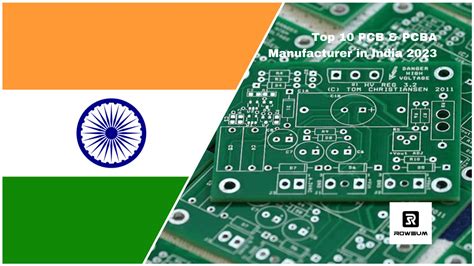
Future Trends: IoT, 5G, and Next-Gen Electronics Shaping PCB Demand
The rapid rise of IoT devices, 5G networks, and next-generation electronics is redefining the priorities of PCB manufacturing companies worldwide. As you look ahead, these technologies demand smaller, faster, and more reliable circuit boards, pushing manufacturers to innovate with high-density interconnect (HDI) designs and rigid-flex PCB solutions. The proliferation of smart devices—from wearables to autonomous systems—requires PCBs that balance compact form factors with enhanced performance, directly influencing PCB manufacturing cost structures. For instance, integrating advanced materials like low-loss substrates or embedding components within layers adds complexity, but it’s critical for meeting the power efficiency and signal integrity needs of 5G and IoT applications.
Regional dynamics also play a role. While Asia-Pacific remains a hub for PCB manufacturing, North American firms are gaining traction by focusing on specialized, high-margin products for defense, aerospace, and medical sectors. This shift underscores how PCB manufacturing businesses must adapt to regional demands while navigating global supply chain challenges. Partnerships between tech giants and PCB producers are accelerating, particularly in developing miniaturized boards for foldable smartphones or ultra-thin modules for edge computing devices.
However, scaling production for IoT and 5G isn’t without hurdles. Rising material costs, coupled with stricter environmental regulations, pressure manufacturers to optimize PCB manufacturing workflows. Innovations like additive printing and automated quality testing are becoming essential to reduce waste and control expenses. Sustainability is no longer optional—companies are investing in eco-friendly processes, such as lead-free soldering and recyclable substrates, to align with global standards.
Looking forward, the convergence of AI-driven design tools and advanced manufacturing techniques will likely lower PCB manufacturing cost barriers, enabling smaller players to compete. Yet, the race to dominate this space hinges on agility. Whether you’re a legacy manufacturer or a startup, staying ahead means embracing trends like embedded components and thermal management solutions while balancing innovation with cost efficiency. The future of electronics rests on how well the PCB manufacturing ecosystem evolves to power smarter, faster, and greener technologies.
Sustainable Practices and Environmental Responsibility in PCB Production
As PCB manufacturing scales to meet global electronics demand, environmental responsibility has become a cornerstone of modern production strategies. Leading PCB manufacturing companies recognize that sustainable practices are no longer optional but critical to long-term viability. By integrating eco-friendly processes, these firms aim to minimize waste, reduce energy consumption, and eliminate hazardous materials like lead and halogenated flame retardants. For instance, many now prioritize water recycling systems and lead-free soldering to curb pollution, while adopting advanced waste management protocols to handle chemical byproducts safely.
Balancing PCB manufacturing cost with sustainability can be challenging, but innovations like energy-efficient machinery and renewable energy adoption help offset operational expenses. Some manufacturers even leverage circular economy principles, reclaiming metals from discarded boards to reuse in new production cycles. This not only lowers raw material costs but also aligns with tightening global regulations, such as the EU’s Restriction of Hazardous Substances (RoHS) directive.
For the PCB manufacturing business, partnerships play a pivotal role in advancing green initiatives. Collaborations with suppliers ensure the sourcing of recyclable substrates and low-impact chemicals, while alliances with tech giants drive demand for eco-conscious designs. You’ll find companies investing in certifications like ISO 14001 to demonstrate compliance and attract clients prioritizing sustainability.
However, challenges persist. Scaling these practices across vast supply chains requires significant investment, and smaller players often struggle to absorb higher upfront PCB manufacturing cost tied to green technologies. Yet, the long-term payoff—enhanced brand reputation, regulatory compliance, and alignment with consumer expectations—makes sustainability a strategic imperative. As consumers and investors increasingly favor environmentally responsible partners, the industry’s shift toward greener practices isn’t just ethical—it’s a competitive advantage.
Conclusion
As you navigate the evolving landscape of PCB manufacturing, it’s clear that the industry’s largest players are not just scaling production but redefining innovation. The world’s top PCB manufacturing companies leverage cutting-edge technologies like high-density interconnect (HDI) and rigid-flex solutions to meet the demands of next-gen electronics, from smartphones to autonomous vehicles. While Asia-Pacific remains the dominant hub for PCB manufacturing business operations, North America continues to strengthen its foothold through specialized, high-reliability applications. Balancing PCB manufacturing cost with quality remains a critical challenge, especially as raw material prices fluctuate and sustainability pressures grow. Leading manufacturers are addressing these hurdles through strategic partnerships, automation, and investments in eco-friendly processes. As 5G, IoT, and AI drive demand for more sophisticated boards, the ability to adapt while maintaining environmental responsibility will separate industry pioneers from the rest. By prioritizing agility and collaboration, these giants ensure they stay ahead in a sector where innovation isn’t optional—it’s the foundation of survival.
Frequently Asked Questions
What defines the largest PCB manufacturing companies in the world?
The largest PCB manufacturing firms are distinguished by their production capacity, technological innovation, and global reach. These companies invest heavily in advanced technologies like high-density interconnect (HDI) and rigid-flex PCB solutions, enabling them to serve industries such as consumer electronics, automotive, and telecommunications. Their dominance is also tied to strategic partnerships and sustainable practices that align with evolving market demands.
How does regional competition impact the PCB manufacturing business?
Asia-Pacific remains the epicenter of PCB manufacturing, driven by cost efficiencies and robust supply chains in countries like China, Japan, and South Korea. Meanwhile, North America focuses on high-margin, specialized PCBs for aerospace and defense. Regional hubs influence PCB manufacturing costs through labor availability, regulatory frameworks, and access to raw materials, shaping global pricing trends.
What factors influence PCB manufacturing costs?
Key factors include material selection (e.g., copper, substrates), layer count, design complexity, and production volume. Advanced features like embedded components or microvias increase costs but enhance performance. Economies of scale allow larger PCB manufacturing companies to reduce per-unit expenses, while smaller firms may prioritize niche markets with higher-margin custom solutions.
How do leading manufacturers stay ahead in innovation?
Top players prioritize R&D to develop next-gen solutions like ultra-thin flexible PCBs and IoT-compatible designs. Collaborations with tech giants and academic institutions accelerate innovation cycles. Sustainability initiatives, such as reducing chemical waste and adopting recyclable materials, also differentiate leaders in the PCB manufacturing landscape.
What challenges do global PCB manufacturing firms face?
Supply chain disruptions, fluctuating raw material prices, and environmental regulations pose significant hurdles. Companies must balance PCB manufacturing costs with compliance to standards like RoHS and REACH. Additionally, rapid technological shifts demand continuous upgrades to production infrastructure and workforce skills.
Why is sustainability critical in modern PCB manufacturing?
Environmental responsibility reduces long-term risks and aligns with consumer and regulatory expectations. Leading firms adopt energy-efficient processes, waste-reduction systems, and eco-friendly materials. Sustainable practices not only lower PCB manufacturing costs through resource optimization but also enhance brand reputation in competitive markets.
Explore Custom PCB Manufacturing Solutions
Looking for tailored PCB manufacturing services that align with your project’s needs? Please click here to discover how industry leaders deliver cutting-edge solutions for your electronics innovation goals: https://www.andwinpcb.com/pcb-manufacturing/.

